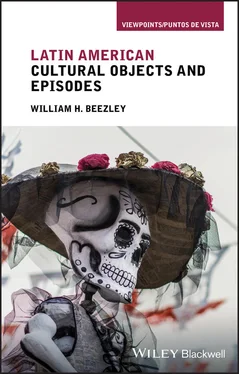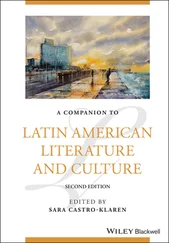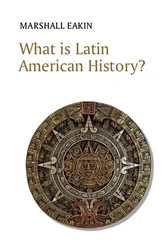Cholitas (indigenous females) in La Paz and cholos (both women and men) in the Potosí and Oruro mining districts changed their hat style early in the twentieth century. Italian merchants selling goods in Bolivia received merchandise, including hats, brought from Genoa by a wholesale enterprise based in Tacna, Peru, Laneri, Solari, & Company. Perhaps Tacna’s earliest Italian retail company was Canepa Hmos y Cia, founded in 1862. Several other Italian companies developed after the British, French, and Spanish abandoned the region in 1879 when the outbreak of the War of the Pacific sparked the Chilean invasion of Bolivian and Peruvian coastal towns. Italians, who had been mostly involved in small trades, 8 stayed during the Chilean occupation and came to dominate commerce, including merchandise going to La Paz, Potosí, and Oruro. Tacna offered the shortest distance with its well‐established trade route that had existed since the mid‐sixteenth century when silver from the mines arrived there for shipment from the nearby port of Arica to Europe and trade goods imported from Europe passed through on the way to Potosí and other mines. Italians, chiefly from Lombardy, Piedmont, and Liguria (especially the capital Genoa), were the largest number of immigrants in Peru from the 1870s until World War II. Tacna’s Italians soon became an integral part of the community, recognized in the Plaza de Armas with a portly statue of their national hero, Christopher Columbus. Each October 12, the town firemen cleaned it with their hoses as part of the Día de la Raza, the Columbus Day celebration. The Italian government named one of the resident Italians as honorary consul. 9 The community had an Italian Club (the Círculo Italiano) led by tycoon Dante Abelli, who had tin mines in Bolivia, and Andrés D. Laneri, who managed the wholesale import business from Genoa. 10
From Tacna, Laneri, Solari & Company shipped to Chile, Peru, and Bolivia various items including luxury clothing and other goods such as Ferrarelle, the famous bottled mineral water from near Naples. 11 The company provided retailers with a multitude of mining tools, preserved foods, and ready‐made clothing, including the rather expensive Italian Borsalino and Valera & Ricca hats. The merchandise until early in the twentieth century arrived from the coast after several days’ travel by mule when it reached Huanuni near Oruro, and Uncía near Potosí. 12 In Oruro, a group of 40 Italians (in 1889) competed for the commercial trade. In nearby Huanuni, Ludovico Antonio Galoppo, who had left his native Piedmont town of Vallemosse for Chile, lived for some years in coastal mining towns, and then moved to the Bolivian mining zone. He soon created a construction partnership with fellow Italian Marcelo Aglietti di Cossato. Aglietti & Galoppo worked for Simon Patiño’s mining company. In 1914, Galoppo turned to retail merchandise with Aldo Ormezzano establishing la Sociedad Galoppo & Ormezzano to import Italian goods to Huanuni. The company successfully sold imported fabrics, draperies, hosiery, hats, stockings, handkerchiefs, shoes, loose wool, and cotton fabrics – all bought from Italy at half price. Galoppo sold his goods in the small general store, where his hats were either tossed in with canned sardines, condensed milk, hard cheeses, other foods, hammers, nails, and dynamite, or they were dangled from the ceiling between slices of smoked lard and Oxford pig feet. Workers selected hats and other items and the mining company deducted the cost from their pay.
Galoppo’s business acumen and market intuition after some years resulted in two decisions on March 17, 1914. His success in developing interest in hats led him to drop the sale of general merchandise and focus only on hats in the hope of obtaining an exclusive contract with the Italian company Borsalino. He wrote to Borsalino’s wholesaler that the obstacle to major hat sales, especially to women, was the cost. Women costumers liked the style but only wanted or could afford to spend about 2 lire, so he proposed that Borsalino produce for them a hat made of less expensive materials than the usual quality felt or wool. He wanted bowler‐style hats described in the 1912 catalog, but made as “qualitá superiore,” with the lowest price materials. He proposed these hats, to appeal to the women, be called the Cappello da Ciola – the Chola hat. 13 It became the iconic derby of women in the Bolivian and Peruvian Andes.
Galoppo’s plan worked. The Borsalino Cappello da Ciola had a good reception and other derbies became popular with men in Huanuni in 1915. For the following year, Galoppo ordered 28 dozen cloth hats for men and 18 dozen Cholas for indigenous women and an additional two dozen elegant samples, with brims of at least 5½ or 6 centimeters (about 2 to 2½ inches), stating, “there is nothing worse than a hat without a brim.” He also ordered four dozen tongos (caps). Galoppo did not want Borsalino to supply the women’s hats to other retailers in Bolivia and suggested such business with other companies might prejudice his dealings with Borsalino. 14
Galoppo’s comments reflected the local competition for hat sales. The Portillo company of Uyuni had begun selling Borsalinos in Huanuni, and in Oruro, Filippo Nannetti had been selling general goods for years. The Marin company had opened a shop in the same community to sell Borsalinos. The hats represented only part of the Italian goods sold by both companies. The Laneri wholesale company did not want to jeopardize successful general sales to these companies in Huanuni, Uncia, and other nearby places. The company opposed the idea of the Borsalino company giving Galoppo exclusive rights and noted that Portillo and Marin were two of its best customers with business valued at thousands of pounds sterling each year. Marin & Co. of Oruro, for example, had developed a strong relationship with Laneri, who provided an endless variety of assorted merchandise, and the company’s warehouses stored products, it was said, “from all climates” with an assortment as complete as the trade fairs of Leipzig and Nizhny Novgorod. Galoppo soon opened Sombrerería Nacional, which eventually earned a reputation for its hats throughout Bolivia.
Even more intense competition existed in La Paz. As early as 1884, the Italian consul in La Paz, Roberto Magliano, reported 300 Italians in the country, with the majority in the capital. They included merchants and pharmacy, clothing, and general store owners, along with 150 Franciscan brothers and 36 Santa Clara nuns. 15 The capital Italians felt numerous and successful enough in 1910 to found the “Sociedad Italiana de Beneficencia Roma.” By 1919, G. De Nota was selling Borsalinos in La Paz. His offerings for men included the old style with loose, silk lining. He bought a minimum of 100 dozen per year. The male consumers here, according to reports, wanted a hat that featured both aesthetics and durability. Beyond Laneri’s retail clients in the city, another source of hats resulted from his sales to a dealer in the Peruvian town of Yunguyo on Lake Titicaca bordering Copacabana, Bolivia, a short distance from La Paz. The Yunguyo retailer, beyond limited local sales, filled resale orders from nearby La Paz, apparently largely delivered by smugglers. The contrabandistas, who were perhaps women, 16 soon specialized in Ciola or Cholita hats.
The hat vendors in La Paz included a second‐generation Italian immigrant couple, Domingo Soligno and his wife, from Buenos Aires, perhaps by way of Salta. They arrived in La Paz confident they could succeed in the haberdashery business with a shop popularizing imported men’s hats. Perhaps the Solignos were familiar with their countrymen’s enterprise in Bolivia through the trade from Salta to La Paz that had been disrupted by, if not completely replaced with, goods shipped from Antofagasta to Oruro when a railroad opened in 1892.
Читать дальше












